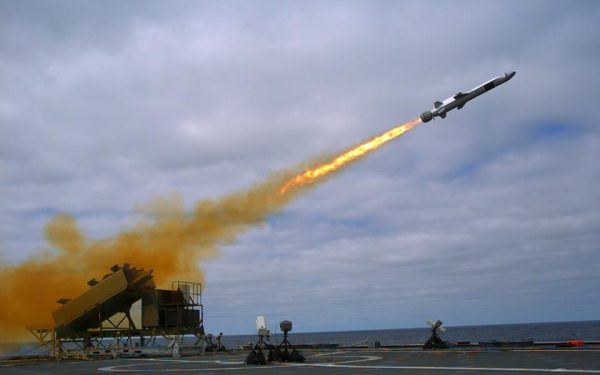A great deal of time has been spent warning about Chinese and Russian technology such as hypersonic and stealth missiles. These missiles and the strategy that uses them would result in a greater number of faster and harder-to-detect missiles that would overwhelm American defenses in the South China Sea or Baltics and allow aggressive actors a free hand. Yet reports are emerging that the United States Navy is acquiring missiles that put the shoe on the other foot.
The philosophy behind the design of what’s called the Naval Strike Missile was to create a subsonic, small, agile missile that would be hard to observe, as opposed to a larger, supersonic missile. Russian supersonic missiles use active radar in their terminal phase, but the strike missile uses passive infrared (IR) to home in on its target and it has the ability to hit pinpoint-specific areas of the ships it is targeting. Combined with its small size, this makes the missile harder to track and able to fly low.

The missiles are incredibly portable. Norway puts them on small corvettes for coastal defense, and the Polish mount them on the back of trucks. American forces can use them with the F-35 which has sensors that are designed to identify and track targets beyond the horizon. The current over-the-horizon missile, the Harpoon, is being phased out, and the Naval Strike Missile is entering testing. With minor modifications it can fit in the internal launch bay of the F-35. This internal launch bay is important because it preserves the F-35’s stealth signature, and helps the notorious gas guzzler maintain top speed and fuel efficiency.
While it is still years away from being implemented, this news is very heartening. For years, analysts and pundits have been fear-mongering over Chinese and Russian threats, and even going so far as saying the carrier is obsolete, without maintaining proper perspective. Having the shoe on the other foot, and explaining what might be a game changer in America’s favor is a nice change of pace.
Of course, the same considerations apply to new American technology as they do to foreign. A system or missile still in the testing phase might have great potential but it remains to be seen if it can be used in combat and integrated with other American assets. The Chinese have their own set of anti-air guns, radar, missiles, sensors, and fighters to provide multi-layered defenses.
In reality, preparing for war is a series of technological responses and counter responses combined with training that leaders hope will be effective in combat. Despite our best efforts of pouring over stats, doctrine, and historical examples, prognosticating is very difficult and still an imperfect science. Still, it is nice to approach a pivotal new American technology for a change.
